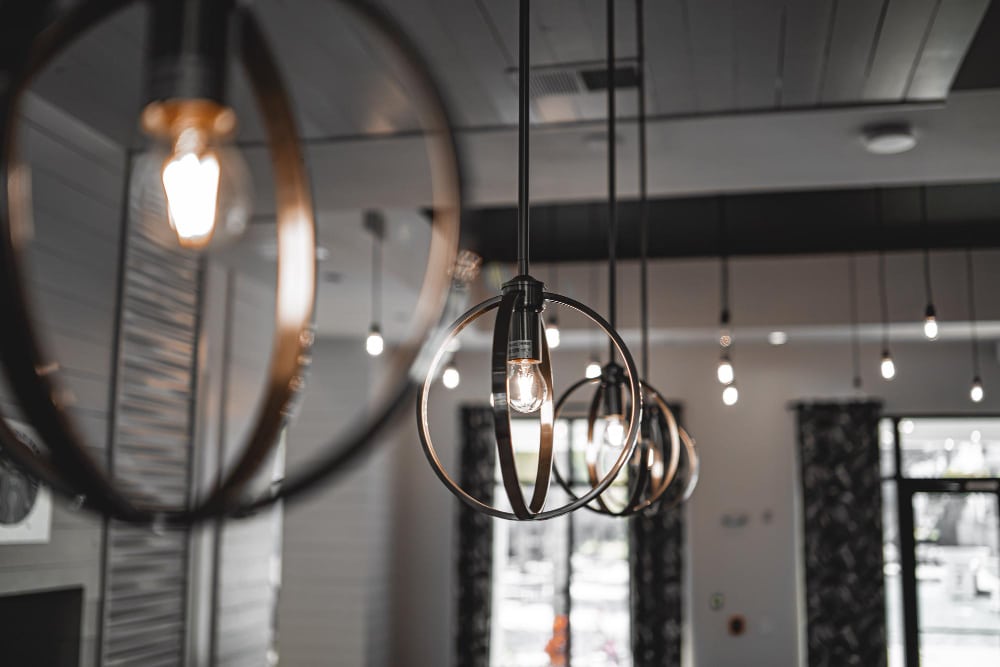It’s estimated that the average person spends about 90% of their time indoors. This means that the quality of lighting in our homes and workplaces has a big impact on our daily lives. Poor lighting can cause eye strain, and headaches, and even affect our moods.
Thankfully, there are a few easy ways to solve common lighting issues, in this blog post, we’ll explore a few of them.

Get New Windows Installed To Help With Natural Light
One common lighting issue is a lack of natural light. This can be solved by installing new windows or adding skylights to your home. If you’re not able to do that, then hanging curtains or roller blinds that can be opened to let in more light is another option. Working with a quality window installation company can help you to find the best solution for your home. And you can be sure that new windows will also help to improve your home’s energy efficiency.
Add More Light Fixtures
Another common issue is that there are simply not enough light fixtures in a space. This can often be the case in rooms with high ceilings, or oddly shaped layouts. The solution here is to add more light fixtures. This could mean adding a ceiling fan with a built-in light or adding floor lamps or table lamps. You can also get creative with track lighting or wall sconces. The important thing is to make sure that there is enough light to properly illuminate the room.
Choose The Right Light Bulbs
One additional issue that we’ll address is using the wrong type of light bulb. Different types of light bulbs emit different levels of light and have different color temperatures. This can affect the way a room looks and feels.
For example, cool white light bulbs are often used in kitchens and bathrooms because they help to create a brighter, more energetic space. However, in a living room or bedroom, you might want to use a softer, warmer light to create a more relaxing atmosphere. Experiment with different types of light bulbs until you find the ones that work best for each room in your home.
Fixures Of The Wrong Size
One common issue that can cause poor lighting in your home is fixtures of the wrong size. For example, a small light fixture in a large room will not provide enough light to properly illuminate the space. Conversely, a large light fixture in a small room can be overwhelming and create too much light. To get the best results, choose light fixtures that are proportionate to the size of the room.
Another common lighting issue is the poor placement of fixtures. Light fixtures should be placed so that they illuminate the space evenly. For example, a lamp placed in a corner will not light the room as effectively as one placed in the center of the room. When placing light fixtures, be sure to consider the size and shape of the room to ensure even lighting.
Cold Ambiance
There’s nothing worse than a cold, unwelcoming ambiance in your home. Thankfully, there are a few solutions you can use to address this issue. First, take a look at your light fixtures. If they’re old and outdated, consider replacing them with new ones. Additionally, make sure to use light bulbs that give off a warm glow.
This will help create a more inviting atmosphere in your home. Finally, be sure to open up your curtains and blinds during the day so that natural light can come in. This will help brighten up your space and make it feel more welcoming.
Electrical Issues
One of the most common lighting issues that homeowners face is electrical problems. If your home is not getting enough power, or if the power is flickering, it can be a sign of an electrical issue. To solve this problem, you will need to contact an electrician. An electrician can diagnose the problem and make the necessary repairs.
Another common lighting issue is inadequate lighting. This can be caused by several factors, such as problems with the wiring or fixtures. If you are having trouble seeing in your home, you may need to add more light fixtures.
You can also try painting the walls a lighter color to make the room appear brighter. Another solution is to install mirrors, which will reflect light and make the room appear larger. Finally, if you are still having problems with lighting, you may need to consult a lighting designer. A lighting designer can help you select the right fixtures and placement for your home.
There are many different lighting issues that homeowners can face. However, by taking the time to troubleshoot the problem, you can find a solution that will work for your home. Remember to consider the size of the room, the type of light bulbs you’re using, and the placement of fixtures when troubleshooting lighting issues. With a little patience and effort, you can have the perfect lighting for your home.

